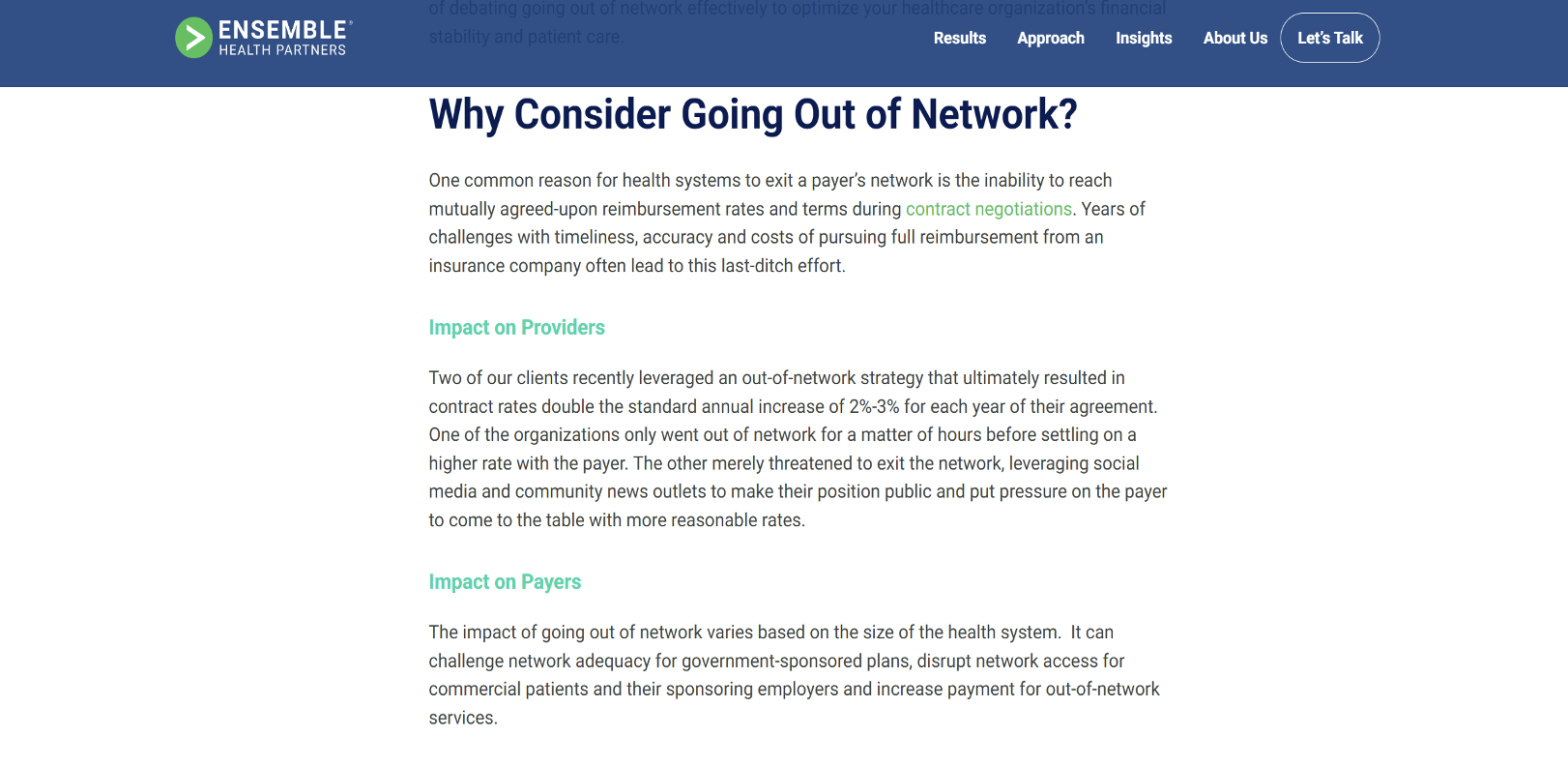Revenue Cycle Managers—A Hidden Middleman Increasing Health Care Costs

An increasing number of major hospital systems are dropping insurance networks—leaving patients and employers to bear the brunt of disrupted care and rising costs. At the center of this trend are Revenue Cycle Managers, third-party firms that help providers navigate increasingly complex billing and payment processes. While that sounds like important work, their tools and incentives reinforce a system that prioritizes revenue over patient affordability and access. Below, we outline who these actors are, how they operate, and how policymakers can realign incentives to prioritize value over volume.
What are revenue cycle managers?
Revenue Cycle Managers (RCMs) are consultants or firms that support hospitals and health systems in managing billing and reimbursements from insurers, government payers like Medicare and Medicaid, and patients. They typically offer services across the entire billing and collections process—such as coding for services, network negotiation, and medical debtcollection. Outside of billing, they also provide hospitals with a long list of services, ranging from scheduling to insurance verification, throughout all elements of a hospital’s “revenue cycle.”
Revenue cycle managers are often paid a percentage of total claims recovered—which magnifies their financial incentive to maximize billing and pursue aggressive negotiations under the fee-for-service payment system. This industry has exploded in recent years, reaching $170 billion in market size in 2024, and is expected to grow to $308 billion by 2030.
How do they impact patient costs and access?
While revenue cycle managers help providers navigate the complex health care system, there is an inherent incentive to raise costs for patients and limit competition between providers. There are three specific dynamics to be aware of:
Hospitals are rewarded by out-of-network threats. Revenue cycle managers increasingly advise hospitals to leave insurance networks or threaten to do so as a negotiation tactic. In practice, that would mean a hospital system stops treating patients who have a specific insurance. This tactic often leads to large increases in reimbursement rates, especially when the hospital system dominates local markets. For example, the revenue cycle manager Ensemble Health Partners reported that going out of network helped clients double typical annual contract increases, as shown below.
When hospitals go out of network, patients—especially those with chronic or ongoing needs—often face disrupted care and higher out-of-pocket costs. Systems like CommonSpirit in Colorado and Hackensack Meridian in New Jersey have temporarily exited networks or threatened to do so, affecting care access for thousands of patients. As hospitals merge and consolidate their market power, they can use this strategy to raise their prices.
The surprise billing process is being gamed. To end surprise medical billing, Congress passed the No Surprises Act and created the “independent dispute resolution” process. However, this process is anything but independent, with providers winning 77% of cases.
Some revenue cycle managers specialize in disputes for surprise medical bills. When providers win, they receive triple the in-network price for services, meaning patients pay more in premiums and out-of-pocket costs. That’s contrary to what Congress expected when the Congressional Budget Office estimated the dispute resolutions process would lead to payments closer to the in-network rate. These high payment levels further incentivize revenue cycle managers to encourageproviders to go out of network, as it is in their interest to do so.
Markets are being more consolidated. Revenue cycle managers also help hospitals capitalize on increasing prices for common services—shifting care to higher-cost hospital-owned sites where billing rates are often significantly higher than in independent doctors’ offices. This contributes to market consolidation and undermines value-based care goals by incentivizing price over efficiency or outcomes.
Some managers also specialize in medical debt collection. As costs rise, they are able tocollect more medical debt. Hospitals will often engage in aggressive medical debt collection practices, including suing patients, garnishing their wages, putting liens on their homes, or seizing their bank accounts.
What’s the solution?
To limit the hospital industry from engaging in behaviors that increase prices and harm access to care, policymakers should take three steps:
First, increase oversight and transparency. The House Oversight and Government Reform Committee should investigate how revenue cycle managers impact costsand network instability. Additionally, the Federal Trade Commission should evaluate how their strategies intersect with hospital consolidation and anti-competitive contracting.
Second, enact policies to encourage competition. In order to reign hospital market power, which is driving their use of out of network tactics, Congress should pass legislation like the Healthy Competition for Better Care Act to ban anti-steering and all-or-nothing contracting practices that prevent insurers from directing patients to lower-cost providers. Several states recently passed laws doing so, with other states like Maine making progress. Congress should also require equal payments for the same services regardless of site of care—an approach supported by bipartisan proposals such as the Cassidy-Hassan site-neutral payments framework.
Third, strengthen the No Surprises Act by lowering out-of-network prices. Congress should close loopholes in the dispute process by anchoring payments to the in-network median rate, as was the case in earlier versions of the law. This would reduce incentives to go out of network and better protect patients from inflated costs.
Conclusion
The fact that revenue cycle managers increase costs for patients is a symptom of a broken health care and hospital financing system that puts consolidation and quantity over value and competition. Congress has a clear role to not only oversee revenue cycle managers but, also, rein in incentives that lead to higher patient costs in the broader health care system.
Subscribe
Get updates whenever new content is added. We'll never share your email with anyone.


